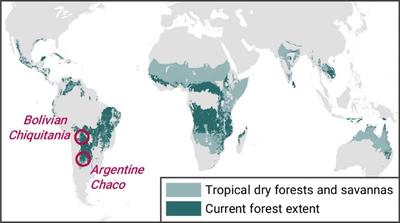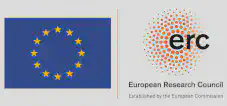Shifting to a Land Systems Paradigm in Conservation
SystemShift seeks to develop concepts and approaches to shift to a land systems perspective in conservation assessments and planning. This will open new ways to understand threats to biodiversity, design effective responses, and identify conservation opportunities.
What motivates us
Biodiversity loss is an accelerating global crisis, eroding the integrity of the biosphere and threatening human wellbeing. The main driver of this crisis is how we use land. This also means that there are huge opportunities for mitigating and halting biodiversity loss by rethinking and transforming land use.
Land System Typology for Conservation
Threat Portfolios
Syndromes of Threat
Global-scale work on dry forests and savannas
Comparative social-ecological work across dry forest regions
Gran Chaco & Chiquitania
Area-based conservation and conservation prioritization
Land use in ABC and CP
We focus on the world’s tropical dry forests and savannas
We conduct global-scale assessments and carry out comparative work across dry forests in South America, Africa and India. Our in depth case studies are based in the Gran Chaco (Argentina, Bolivia, Paraguay) and Chiquitano Forests (Bolivia).

Research
Land use is a major driver of biodiversity loss, a global crisis threatening human well-being. The ERC-funded SystemShift project will advance our understanding of how land use threatens biodiversity. Specifically, SystemShift will develop novel concepts to identify key combinations of land-use actors and threats, analyzing their interactions, and to carry out effective conservation planning. The project will test these concepts in South America’s Chaco and Chiquitano forests, and explore dry forests globally to provide insights into conservation challenges and opportunities in these endangered forests.
Read more about our research
Publications
Discover our latest publications and explore the research driving our work forward. Read more
Network and Partners
We acknowledge the indispensable expertise and contributions of local and regional experts in the tropical dry forests of our study areas, integral to our research. Our collaboration extends to a diverse network of research institutions, organisations and stakeholders. Get to know our partners
